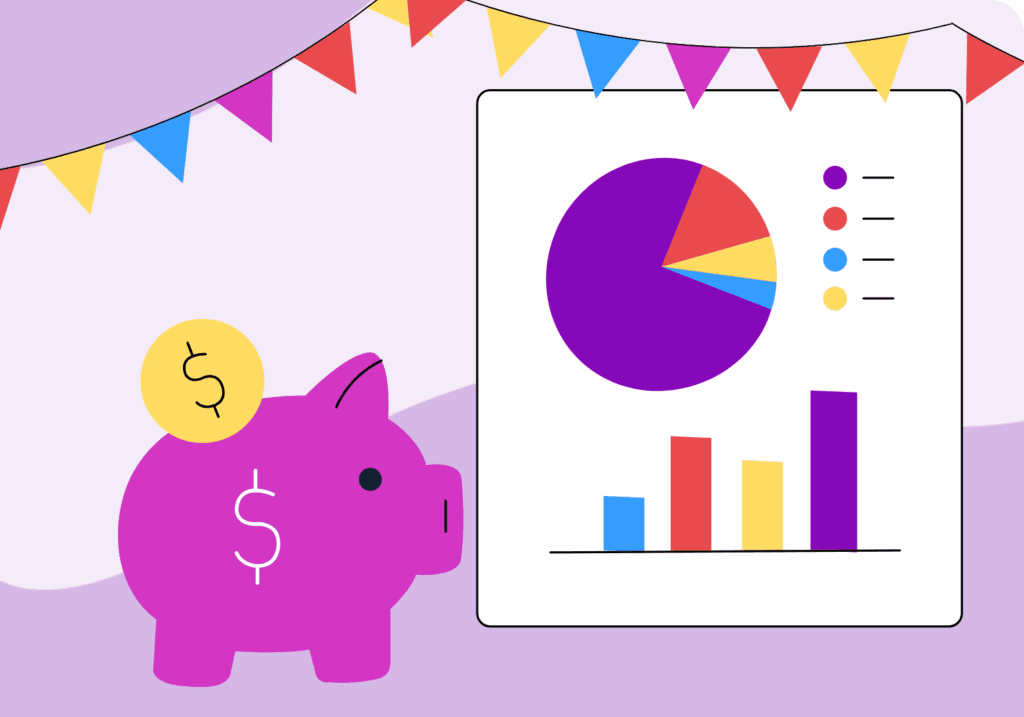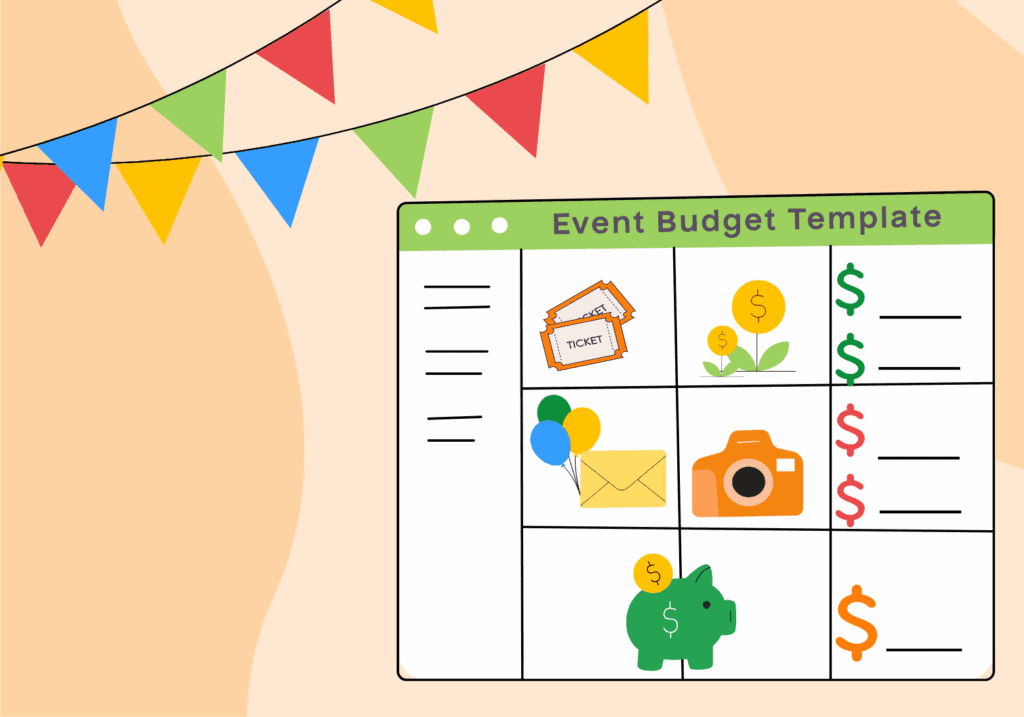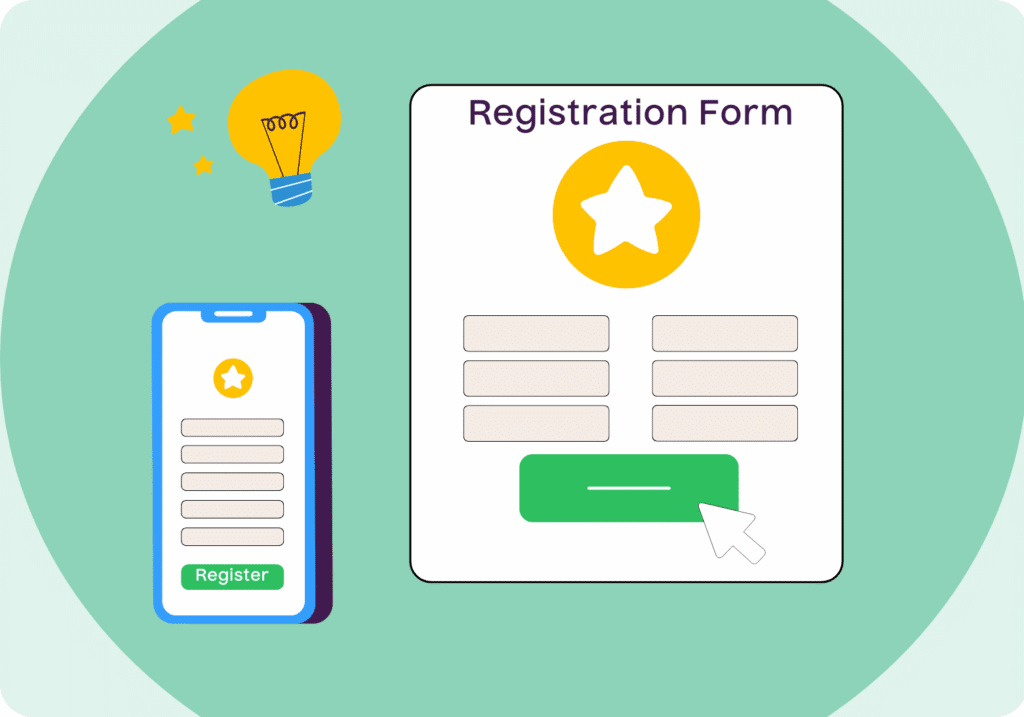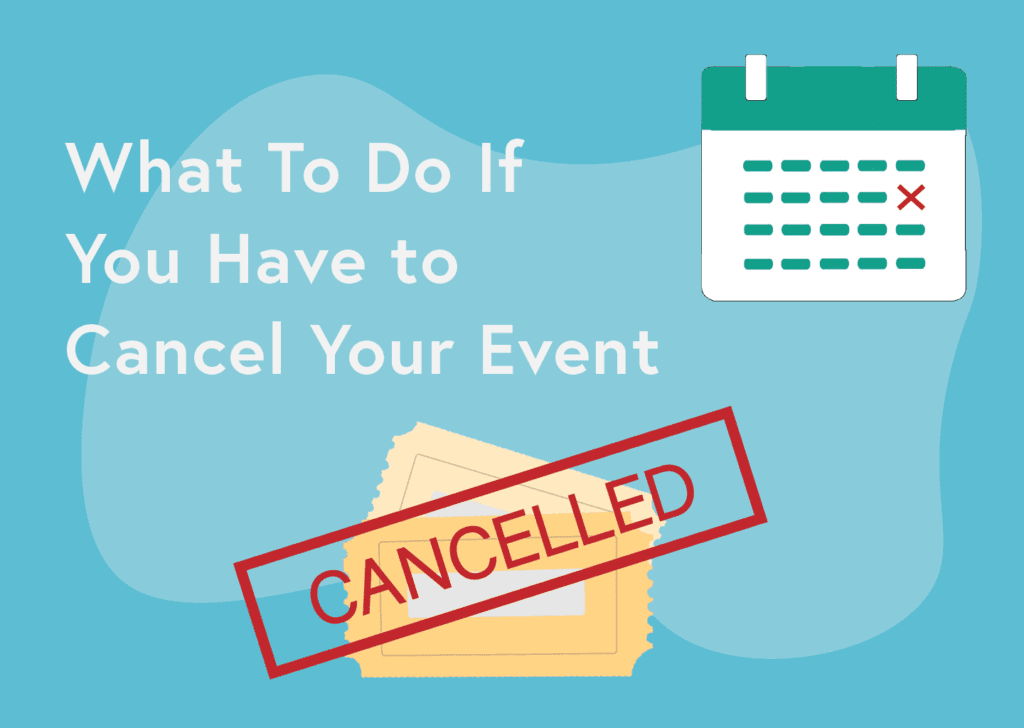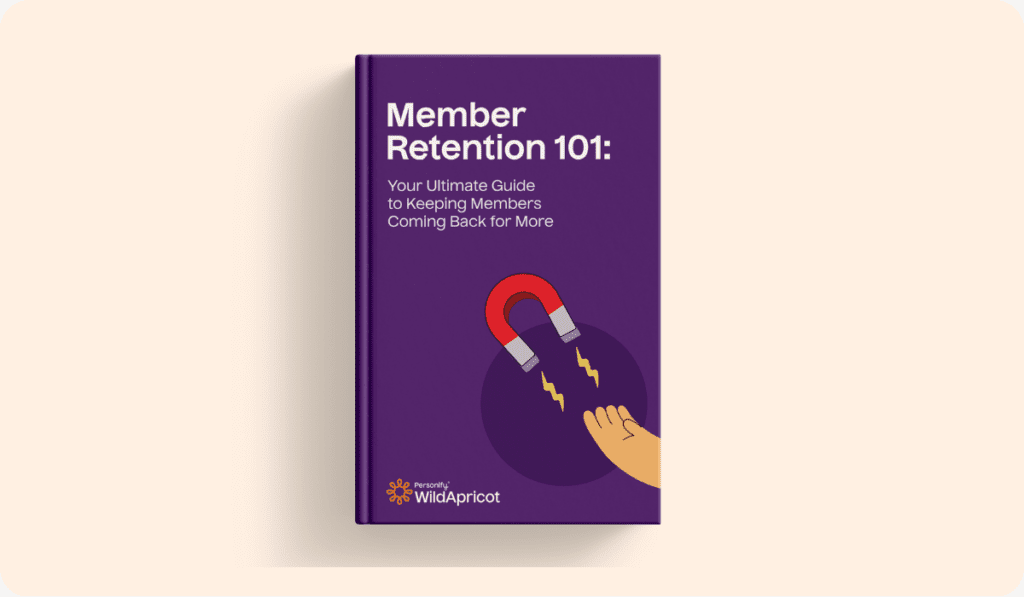Planning an event means more than picking a venue and sending invites. You want people to participate and leave feeling like their time was well spent. That’s what event engagement is about. Holding attention and creating genuine connections, from the first announcement to the final recap.
This guide breaks down the entire process step by step. We’ll look at mistakes that cause engagement to drop, strategies that keep energy high and event engagement ideas you can use for nonprofits, associations, chambers and clubs. You’ll also find ways to measure results so you can see what worked and improve next time.
Whether you’re running a fundraiser, a member conference or a community gathering, these event engagement strategies will help you keep attendees interested before, during and long after the event ends.
Common Pitfalls That Lower Engagement
Even well-planned events can fall flat if attendees lose interest along the way. Here are some of the biggest mistakes that cut engagement short.
Not Creating Pre-Event Buzz
If the first time someone thinks about your event is the day it happens, you’ve already lost half the battle. Attendees need a reason to look forward to it. Without teaser posts, email reminders or early involvement opportunities, many people walk in cold and leave just as quickly.
Complex Processes: Registration and Check-In
Nothing kills excitement faster than clunky forms or long lines at the door. If your registration system isn’t mobile-friendly or if attendees need to wait too long to check in, frustration builds before the event even starts. A smooth process sets the tone for the entire experience.
Poor Event Pacing
Gaps in the schedule, sessions that run too long or insufficient breaks can leave people restless. When attendees don’t know what’s coming next or feel stuck in one spot, they mentally check out. A balanced flow of learning, networking and downtime helps maintain steady energy levels.
Missing Momentum After the Event
Many organizers stop engaging with their event goers as soon as the last session ends. Without a follow-up email, survey or recap, connections fade quickly. Attendees move on, and the effort you put into planning loses its long-term impact.
Failing To Track Engagement
If you don’t measure how people participated, whether through app usage, poll responses or feedback forms, you’ll have no way to know what worked. Guessing your way into the next event often means repeating the same mistakes.
Things to Consider to Boost Event Engagement
Strong engagement doesn’t happen by accident. Even if you avoid the previous mistakes we listed above, increasing event engagement takes a bit more work. It comes from truly knowing your attendees and planning with purpose. Before you put strategies in motion, keep these points in mind.
Who Is Your Audience
Not every event works for every group. A chamber of commerce generally values networking over entertainment, while a club audience might prefer something more casual and fun. If you know precisely who is attending, you can easily tailor your event’s activities to them.
Alignment With Your Mission
Every event should connect back to why your organization exists. If you’re a nonprofit, attendees should see how the event supports your cause. If you’re an association, people should leave with resources that strengthen their professional growth. When engagement aligns with your mission, it fosters trust and encourages people to return.
Balance Fun And Value
Raffles, games and giveaways can draw attention, but they aren’t enough on their own. Attendees also want time to learn, connect and share ideas. Strike the right balance between fun and meaningful interaction to make an event feel worthwhile without dragging down the energy.
Go Beyond the Event
Engagement doesn’t end when the doors close. People want to feel like they’re part of something ongoing. Sharing recaps, sending thank-yous or giving attendees ways to connect after the event shows that you see it as one step in a bigger relationship, not a one-off gathering.
Pre-Event Engagement Strategies
Engagement starts well before the first guest walks through the door. The lead-up sets the tone, and if people feel connected early, they’re more likely to show up excited and ready to participate.
Here are our top strategies to employ before your event occurs to spark engagement and increase the likelihood of success.
Personalizing the Experience Before Day One
One of the simplest ways to begin is through personalized communication. Instead of sending the same generic invite to everyone, segment your audience and speak directly to their interests. Members who’ve attended past fundraisers might want to see how this year builds on previous impact, and first-time guests may need a tangible reason to attend. A personal touch can turn a single email into a moment that feels like an invitation instead of a formality.
Social media is another tool to build anticipation. Hashtags, teaser videos or even a quick poll about what attendees want to see can spark conversation and make people feel like they’re shaping the experience. The more attendees interact with these posts, the more invested they become before the event even begins.
Making Registration Part of the Engagement Journey
You can also invite members to take part in planning beyond social media engagement. Ask people to vote on sessions, submit questions for speakers or volunteer for roles, giving them a stake in the outcome. When attendees see their input reflected in the program, they arrive with a stronger sense of ownership. Provide links to these initiatives in your registration emails and promotional content like blogs, registration form and in your newsletters.
Don’t overlook the basics either. If registration is slow, clunky or hard to use on a phone, some people will give up before they even finish signing up. A mobile-friendly system that allows for quick registration and easy check-in reduces frustration and sets the event off on the right foot.
These early touches — personalized messages, interactive promotions, opportunities for involvement and a smooth registration process — work together to create excitement. By the time the event day arrives, attendees already feel like they’re part of something worth showing up for.
Read more: Event Registration Forms 101: How-To, Best Practices and Templates
Event Engagement Strategies During the Event
Once the event begins, your job shifts from building anticipation to holding attention. A strong program keeps people active, curious and connected throughout the day. This is where most event organizers put the bulk of their engagement initiatives. Here are our top picks for your next event.
Creating Interactive Sessions
Sitting passively through long presentations is one of the fastest ways to lose your audience. No one wants to feel like they’re being talked at or lectured at an event they were excited to attend. Adding interactivity – Q&As, live polls, small group discussions or even gamified challenges – turns passive attendees into active participants. Breakout groups give people space to contribute their own ideas, while polls and quizzes keep large sessions lively. When attendees feel involved, they’re much less likely to disengage.
Building Spaces for Connection
For many, the most valuable part of an event is the chance to meet others. Structured icebreakers, roundtable discussions or speed networking sessions help people connect beyond casual hallway chats. For many individuals, your event could be the first time to see someone they’ve connected with online – maybe it’s the one chance a year they get to see other colleagues in their industry.
By guiding networking instead of leaving it to chance, you make it easier for attendees to walk away with new relationships and stronger ties to your organization.
Making Technology Work for Everyone
Event technology can extend engagement far beyond the room itself. Apps that handle scheduling, maps and real-time updates reduce confusion and keep people engaged with the program. Live streaming and hybrid options also open the door for remote participants to join in a meaningful way. When people feel included — whether they’re sitting in the front row or joining from another city — they’re more likely to stay connected.
Read more: How to Use QR Codes to Speed Up Event Check-In
Accessibility and Recognition
True, authentic engagement means making sure no one is left out. Offering multilingual resources, clear accommodations for attendees with disabilities and inclusive design helps everyone take part fully. Recognition matters too: highlighting sponsors, thanking volunteers or calling out standout members during the program makes people feel valued and encourages future involvement.
When interactivity, networking, technology, accessibility, and recognition come together, attendees experience an event that feels active rather than static. And the more present and engaged they feel during the day, the stronger the relationship becomes once the event ends.
Post-Event Engagement Strategies
The energy from an event shouldn’t disappear once the doors close. The follow-up stage is where short-term excitement turns into long-term connection. Once you build that relationship with an event attendee, maintaining and strengthening it is how you create long-term engagement. Try these strategies after your event concludes.
Keeping the Conversation Going
A simple thank-you email goes a long way, but you can take it further by sharing recap content. Blog posts, highlight reels on social media or photo albums let attendees relive the experience and share it with others. When people see themselves and their peers featured, it reinforces the sense of community.
Surveys are another vital piece. Sending them right after the event captures feedback while it’s fresh. Ask about the sessions, the format and what people would like to see next time. Just as asking for input before the event is important, your attendees’ voices post-event will help you make the next event even more engaging. The responses give you practical insights while also signaling that attendees’ opinions matter.
Turning Events Into Ongoing Involvement
Your event produces a lot of content that you can repurpose. Recorded sessions can become YouTube clips, podcasts or educational resources for members who weren’t able to attend. This extends the event’s value and keeps the material working long after the day is over.
Post-event communication is also a good moment to invite attendees into deeper involvement. Offering a membership discount, highlighting volunteer roles or pointing to upcoming programs shows clear next steps. These calls to action turn a one-time experience into part of a longer relationship with your organization.
When the follow-up is thoughtful, attendees don’t feel like the event was an isolated moment. It becomes a bridge to ongoing participation, future events and stronger ties to your mission.
How To Measure Event Engagement Success
Even the most creative program doesn’t mean much if you can’t tell whether it worked. Measuring engagement helps you understand where attendees were most active and where they lost interest. The data you collect guides future planning and makes it easier to prove the value of your events.
Registration and attendance are the most obvious starting points. A high number of sign-ups is encouraging, but it doesn’t always translate into people showing up. Comparing registrations against actual check-ins tells you whether your outreach and reminders were effective.
During the event, participation data can show how invested people were. Look at how many attendees responded to live polls, filled out surveys, joined breakout rooms or used your event app. These numbers give you a picture of where energy was high and where it dipped.
Social media is another window into engagement. Hashtag usage, likes, shares and comments reveal whether attendees were excited enough to spread the word. This type of activity also extends the event’s reach to people who weren’t in the room, adding long-term value.
Using Feedback to Improve
Numbers tell part of the story, but direct feedback gives you context. Post-event surveys, open-ended questions or even short interviews with attendees can uncover details that you won’t see in data alone. Did people feel welcomed? Was the pacing comfortable? Did they leave with something useful?
By combining hard numbers with honest feedback, you can form a complete picture of success. And more importantly, you’ll know exactly what to repeat (and what to change!) before your next event.
Tools To Make Your Next Event a Showstopper
Good engagement strategies work best when you have the right tools to support them. WildApricot offers a 60-day free trial so you can see how its features simplify event management from start to finish.
With WildApricot, you can build a website that handles event promotion and registration while also processing payments in one place. The event management software makes it easy to set up sessions, manage waitlists and track attendance. A built-in membership database keeps your contact information organized, while the emailing system helps you send reminders, updates and follow-up messages without juggling separate platforms.
For the event day itself, the mobile app is especially useful. Attendees can register or check in on the spot, and organizers can monitor sign-ups in real time. These tools cut down on stress behind the scenes so you can focus on keeping attendees engaged.
By combining strategy with the right technology, you’ll have a clear path from registration to recap and fewer headaches along the way.
12 Event Engagement Ideas for Every Org
Every organization has a unique audience, and engagement takes on a different form depending on who you’re serving. What excites a chamber of commerce crowd like doesn’t resonate with a local club, and a nonprofit fundraiser has a very different tone than an association conference. That’s why it helps to look at event engagement ideas by type of group. Here are twelve approaches, categorized into four sections, that you can adapt for your next event.
Nonprofit Event Engagement Ideas
For nonprofits, events often serve two purposes: raising funds and strengthening ties with the community. Engagement ideas should help people feel personally invested in the mission while also giving them a chance to contribute.
1. Peer-to-Peer Challenge
A peer-to-peer challenge is one way to do that. Ask attendees to recruit friends to come to the next fundraiser, and offer a small recognition or reward to those who bring in the most guests. It adds a competitive but fun spirit and spreads awareness of your cause.
2. Donor Recognition Wall
A donor recognition wall, whether digital or physical, can highlight contributions in real time. Displaying names of donors during the event creates visibility and encourages others to give. It also makes supporters feel valued, which is key to long-term engagement.
3. Community Vote
A community vote can turn fundraising into a shared decision. Let attendees choose where the raised money goes by offering a shortlist of programs or projects. This sparks conversation and shows transparency, giving people confidence that their contributions have a direct impact.
Association Event Engagement Ideas
Associations bring people together around shared professional interests, so engagement works best when it helps members connect and grow. The more useful and collaborative the event feels, the more likely attendees are to see value in staying involved long term.
4. Pre-Event Networking Match-Ups
One idea is to set up pre-event networking match-ups. Pair attendees with similar interests or agendas and introduce them before the event starts. By the time they arrive, they already have a connection waiting for them, which lowers barriers and makes networking feel more natural.
5. Professional Development Crash Course
Another approach is to host a professional development crash course. A short, focused workshop gives members a chance to build skills, share expertise and learn from each other. It turns the event into more than just a gathering. It becomes a place where people can walk away with practical takeaways.
6. Booth Passport Prizes
A booth passport prize system works well for trade shows or expos. Give attendees a stamp or code for each exhibitor they visit, and reward those who complete the “passport.” This encourages people to engage with more vendors, while exhibitors get more traffic and conversations.
Chamber of Commerce Event Engagement Ideas
Chambers often focus on promoting local businesses and strengthening community ties, so engagement strategies should highlight members while giving them chances to connect.
7. Business Highlights
A simple but effective option is to feature business highlights in your pre-event promotions. Spotlight member businesses in emails, social media posts or event materials so attendees get to know who’s part of the chamber before the event even begins. It builds visibility for members and sparks curiosity about meeting them in person.
8. Panel Discussions
You can also plan panel discussions that bring together a mix of chamber members, sponsors and community leaders. A conversational format, like a fireside chat, helps attendees hear multiple perspectives, and it positions the chamber as a hub for meaningful dialogue.
9. Follow-Up Directory
After the event, follow up with a digital directory or contact sheet of attendees. This gives participants an easy way to stay in touch and encourages continued networking long after the event ends. It also reinforces the chamber’s role as a connector in the local business community.
Club Event Engagement Ideas
Clubs thrive on a sense of community and fun, so engagement works best when it strengthens social bonds while maintaining a light atmosphere.
10. Early Bird Perks
Offering early bird perks is a simple way to build excitement. Attendees who register early could get small bonuses like raffle entries, VIP seating or first choice of activities. This rewards commitment and helps drive up registrations sooner.
11. Photo Booth
A photo booth is another easy win. Set up props and a backdrop that reflect the club’s identity, and encourage attendees to share their photos on social media. It creates a lively atmosphere, increases online visibility and leaves people with tangible memories of the event.
12. Club Award
Lastly, consider hosting club awards. Fun categories like “Most Enthusiastic,” “Best Team Spirit” or “Always First to RSVP” give members recognition in a playful way. These lighthearted awards bring entertainment but also strengthen the sense of belonging that keeps club members engaged.
From Registration to Recap: Bringing It All Together
Strong event engagement doesn’t happen at one single point. It’s a thread that runs from the first registration email to the final thank-you message. When you plan for each stage — before, during, after — you give attendees more reasons to participate and more reasons to stay connected with your organization.
By pairing thoughtful strategies with the right tools, like those offered through WildApricot, you can simplify the work behind the scenes and keep your focus where it belongs: on your attendees. With clear planning and consistent follow-up, your events can do more than fill a room. They can strengthen relationships that last long after the recap is posted.




